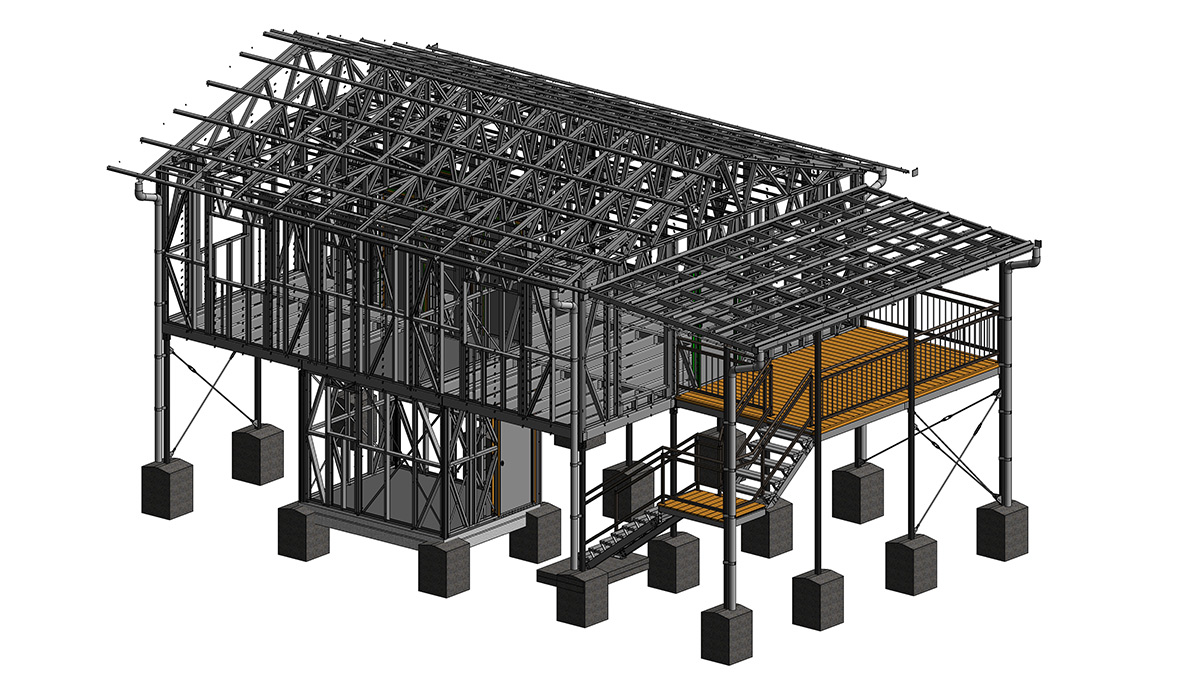In the changing environment of construction, the development of Building Information Modeling (BIM) has altered the way structures are designed, planned, and constructed. Structural BIM services are an essential player in the construction industry, boosting efficiency and innovation. This examination dives into the BIM services’ complex function and clarifies how it impacts the future of building and architecture.

Introduction to Structural BIM Services
The Evolution of Construction Practices: Traditionally, construction projects relied on 2D drawings and manual coordination, leading to challenges in accuracy and collaboration. Structural BIM service mark a paradigm shift by introducing a digital approach that encompasses the entire lifecycle of a structure.
Defining Structural BIM: Structural BIM involves creating a digital representation of a building’s physical and functional characteristics. It goes beyond geometry, incorporating data about materials, components, and systems, fostering a comprehensive understanding of the structure.
The Pillars of Structural BIM Solutions
3D Modeling for Precision: The cornerstone of Structural BIM is 3D modeling, enabling precise visualization of the structure. This not only aids in accurate design but also enhances communication among stakeholders, reducing the likelihood of errors during construction.
Data-Rich Models: Structural BIM service contribute to the creation of data-rich models. Information about structural elements, materials, and specifications are embedded in the model, facilitating informed decision-making at every stage of the project.
Collaboration and Coordination:
Enhanced Collaboration Among Disciplines: Structural BIM promotes seamless collaboration among various disciplines involved in a construction project. Architects, engineers, and contractors can work on a unified platform, reducing discrepancies and streamlining the flow of information.
Clash Detection and Resolution: One of the significant advantages of Structural BIM is its ability to detect clashes and conflicts in the design phase. This proactive approach allows for the resolution of issues before they manifest in the physical construction, saving time and resources.
Efficiency in Design and Analysis:
Iterative Design Refinement: Structural BIM service facilitate iterative design refinement. Design changes can be implemented in real-time, allowing for quick evaluation and adjustment, ensuring that the final design meets performance criteria.
Structural Analysis and Simulation: BIM platforms integrate structural analysis tools, enabling engineers to simulate various scenarios. This results in a more informed design process, where the structural integrity of the building is rigorously tested and optimized.
Impact on Construction Phases:
Planning and Feasibility Studies: In the initial stages, Structural BIM aids in comprehensive planning and feasibility studies. The digital model allows stakeholders to assess the viability of the project, considering factors such as site constraints, materials, and construction methodologies.
Construction Documentation: Structural BIM service streamline the creation of construction documentation. Accurate and detailed drawings, schedules, and quantities are generated automatically from the BIM model, reducing the likelihood of discrepancies during construction.
Sustainability Integration:
Material Efficiency and Life-Cycle Assessment: Sustainability is increasingly becoming a focal point in construction. Structural services enable the integration of material efficiency strategies and life-cycle assessment, supporting the design of environmentally conscious structures.
Energy Performance Optimization: By incorporating data on energy usage and performance in the BIM model, Structural BIM service contribute to the optimization of a building’s energy performance. This aligns with the growing emphasis on creating energy-efficient structures.
Challenges and Evolving Solutions:
Skill Set and Training: Adopting Structural BIM requires a skilled workforce. Challenges in terms of skill set and training are being addressed through industry-wide initiatives, training programs, and educational partnerships.
Interoperability Challenges: Interoperability issues, where different software platforms may not seamlessly communicate, are being tackled through standardized data formats and improved collaboration between software developers.
Future Trajectory of Structural BIM Service
Advanced Parametric Modeling: The future of Structural BIM services involves advancements in parametric modeling. This will allow for more complex and dynamic designs, providing architects and engineers with unprecedented flexibility.
Integration of Artificial Intelligence: Artificial Intelligence (AI) is poised to play a significant role in Structural Services. AI algorithms can enhance design optimization, predictive analysis, and automate repetitive tasks, further increasing efficiency.
Case Studies: Realizing the Potential of Structural BIM:
The Shard, London: The Shard, an iconic skyscraper in London, stands as a testament to the potential of Structural BIM. The complex geometry and structural intricacies were effectively managed through precise BIM modeling.
One Central Park, Sydney: One Central Park in Sydney exemplifies how Structural BIM service contribute to sustainable design. The integration of green infrastructure and efficient structural systems was made possible through advanced BIM techniques.
Conclusion
In conclusion, Structural BIM services are not just tools; they are transformative agents in the construction industry. By providing a holistic and data-rich representation of structures, they empower stakeholders to make informed decisions, enhance collaboration, and drive efficiency. The role of ENGISOFT ENGINEERING – BIM Staffing & BIM Services will be crucial in creating the future, one in which structures are not just practical and aesthetically beautiful but also durable, precisely constructed, and sustainable as the construction landscape continues to change. BIM services serve as essential guides for the construction industry as it travels toward this future, leading it into a new era of innovation and quality.










